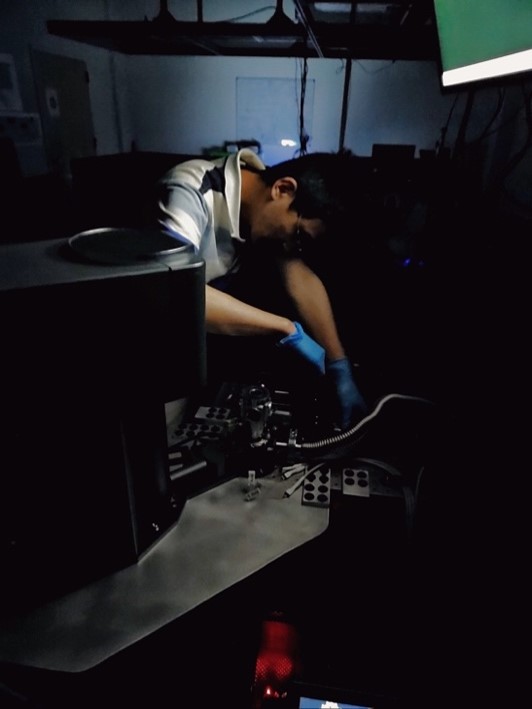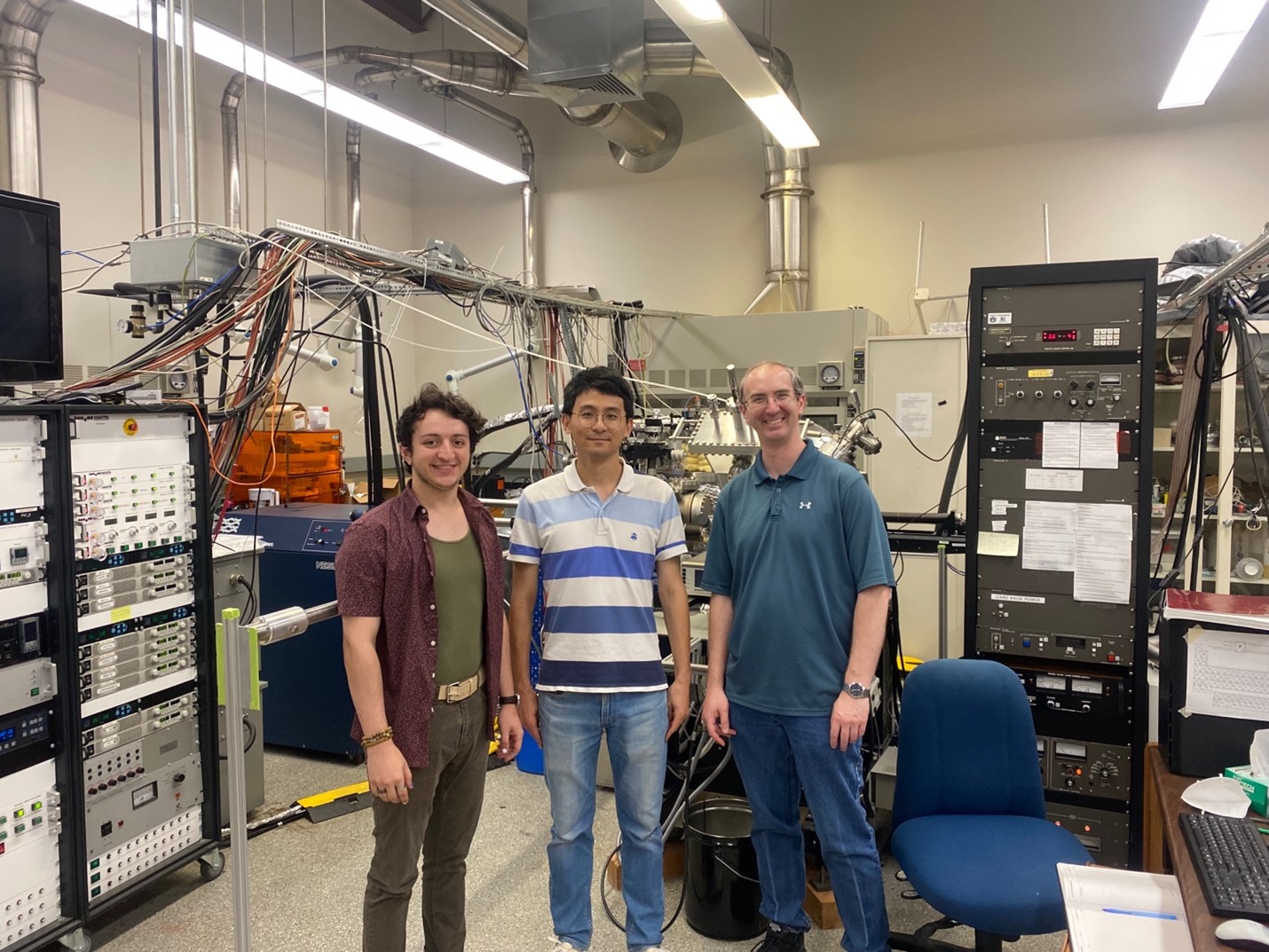When nanoflakes meet epitaxial thin films
Funding from the U.S. Department of Defense allows Auburn researchers to fabricate a novel composite material system and explore device applications at its interface.
In the project “Studying magnetoelectric coupling in van der Waals/oxide thin film heterostructures”, the Auburn Physics team led by Wencan Jin proposes to build a new type of composite system based on van der Waals materials and oxide thin films. This project has recently been funded by the U.S. Air Force Office of Scientific Research as part of the $18 million Defense Established Program to Stimulate Competitive Research (DEPSCoR), among 28 collaborative research teams across the country [1].
“Magnetoelectric” refers to the coupling between magnetic and electric properties of a material. Through magnetoelectric coupling, one can control magnetization by applying an electric field, which could be an important route for developing large-capacity and low-power memories and ultrahigh-sensitivity magnetic sensors. However, in most cases, materials are either ferromagnetic or ferroelectric. The coexistence of both states in a coupled fashion is called “multiferroic”, which is very rare in nature.
In recent years, combining ferromagnetic and ferroelectric materials into a composite system has become a new strategy to resolve this challenge. In general, the composite system is in the form of a heterostructure or heterojunction. It features an interface between two layers of dissimilar materials, where interesting functionalities can be produced. The concept of “interface is the device” has endowed the tremendous success of the semiconductor industry. “We believe the legend will continue in the multiferroic heterostructures,” Jin says.
Jin joined Auburn in 2019. He is an assistant professor in Physics and an adjunct assistant professor in Electrical and Computer Engineering. His Ultrafast and Nonlinear Optics Lab [2] focuses on studying two-dimensional van der Waals materials using advanced optical spectroscopy and photoemission spectroscopy techniques.
To encourage the participation of new faculty members, DEPSCoR stipulates that the principal investigators must collaborate with a researcher who has already worked with the Department of Defense. Ryan Comes, an associate professor in Physics, is the co-investigator of the project. He will act as a mentor and guide Jin through the process of working with government institutions. Comes lab [3] focuses primarily on the synthesis of oxide thin films using the hybrid molecular beam epitaxial technique.
Building a new type of interface
As a research team with complementary expertise, Dr. Jin and Dr. Comes plan to let the van der Waals nanoflakes meet the epitaxial thin films at the interface. van der Waals materials and oxide thin films contain a wide variety of ferromagnetic and ferroelectric materials. By choosing the appropriate combination of composite constituents from the pool, their interface may host profound magnetoelectric coupling.
This new type of interface will be made through advanced nano-fabrication techniques, which have been extensively used in Jin’s research of two-dimensional materials. Compared with the conventional interfaces, the new interface is expected to be atomically flat without the mismatch between lattices or dangling bonds. To keep the interface in pristine condition, the fabrication must be done in a glovebox filled with inert gas. Jin will lead the effort to assemble the glovebox with a built-in motorized transfer stage. “This will be a state-of-the-art instrument and we believe it will promote interdisciplinary research activities on campus,” Jin said. “This is well aligned with the scope of DEPSCoR to strengthen the basic research infrastructure at institutions of higher education in underused states or territories.”
Testing device performance
Building the interface is the first step of the three-year project. The potential applications of the van der Waals/oxide thin film heterostructures are highly relevant to the needs of the Department of Defense and mesh with the Materials & Manufacturing Directorate and the Sensors Directorate at the Air Force Research Laboratory (AFRL).
“We will then fabricate the new interface into a field effect transistor and test its performance,” Jin explained. “When we apply an electric voltage, the charge distribution at the interface may change and lead to magnetic switching. This is the key step towards real electronic devices for memory, transduction, and sensing applications.”
This project received generous support from the researchers at the AFRL. They will provide high-quality van der Waals materials. “Our postdocs and graduate students will have opportunities to carry out device fabrication and material characterization using the AFRL facilities at Ohio”, Comes said. “They will receive comprehensive training in science and engineering for future defense workforce needs.”
Pushing the collaboration to the next level
Jin and Comes have established collaboration through their ongoing Department of Energy (DOE) project [4], in which they work with DOE national laboratories to study charge transfer at complex oxide interfaces. Their collaboration has recently led to a publication in Nature Nanotechnology [5].
The DEPSCoR funding will push their collaborative research program to the next level. More postdocs and students will be recruited, and more intriguing materials will be studied down the road.
[2] https://jinlab.auburn.edu/
[5] https://www.nature.com/articles/s41565-023-01397-0
Latest Headlines
-
02/12/2025
-
02/11/2025
-
02/10/2025
-
01/30/2025
-
12/03/2024


